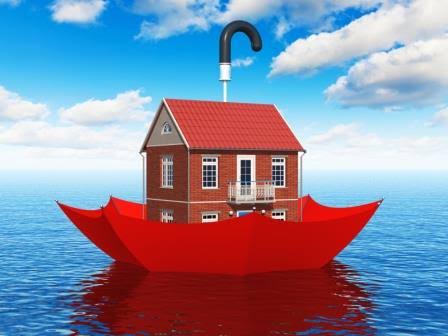Flooding is one of nature’s most dangerous natural disasters. The expense to restore and repair a homeowner’s house and possessions might go into the thousands of dollars.
Many people find out too late that their home insurance does not cover flooding. Fortunately, the National Flood Insurance Program offers a separate policy that covers your building and your belongings.
Flooding isn’t a Big Deal
Flooding is one of the most common natural disasters and can cause catastrophic damage to homes and personal property. Unfortunately, many people remain underinsured against this potentially devastating peril. Even in areas outside of a flood zone, flooding is a significant problem, causing billions of dollars in damage each year.
Homeowners’ insurance doesn’t cover flood damage, so people who live in high-risk areas need separate coverage to protect their homes and possessions. Fortunately, the National Flood Insurance Program (NFIP) is available to provide affordable protection.
Unfortunately, some people don’t understand what a flood policy covers. As a result, they need to make informed decisions about whether or not to buy it.
Many people think that their mortgage lender requires them to have flood insurance. However, the reality is that this is a minimum federal requirement only. And even if you don’t have a mortgage, it is still a good idea to get a policy, especially considering that 20-25 percent of all NFIP claims are from outside of high-risk flood zones. Plus, the cost of flood insurance is much more affordable than most people realize.
Flood Policy is Not Required in Not a High-Risk Flood Zone
Flood damage is not covered by standard home insurance. Thus, a supplemental flood policy must be acquired via the National Flood Insurance Program (NFIP). Many people are surprised that their homes and belongings are only protected if they have a flood policy. This is especially true for rental properties, where the landlord’s home insurance might not cover flood damage.
Flood insurance in Ohio is available for all homeowners in communities that participate in the NFIP, including those who live outside of a high-risk “Special Flood Hazard Zone Area.” In fact, about three-quarters of NFIP policies are sold to property owners who live in these areas. Mortgage lenders may require this coverage as a condition of mortgage approval.
The reason that homes in non-hazard zones still need a flood policy is that most of the nation’s population lives in low- to moderate-risk areas where flooding occurs more frequently and causes more significant damage. In addition, it only takes a few inches of water to cause effective destruction.
Whether you live in a hazard zone or not, you can’t afford to take the risk of not getting flood insurance. The NFIP also points out that substantial property loss might result from even a few inches of water causing severe damage.
Your Neighbor’s Insurance Will Cover a Tree Falling on Your Home
Generally, if a tree falls on your neighbor’s home and causes damage due to an act of nature (like a storm or a windstorm), the property owner’s insurance will cover the damages. The homeowner’s policy typically has either dwelling or liability coverage, depending on where the tree came from and how much damage was caused.
Similarly, if a flood causes your neighbor’s home to sustain damage, their homeowners or renters insurance will likely step in and pay for the repairs. Flood damage is generally considered a peril beyond a property’s control. If the flooding was due to a nearby river or lake overflowing after excessive rainfall and melting snow, however, the property owner could be held liable for the flood damage.
It’s essential to understand the facts about flood insurance to get the protection you need. Sadly, many people find out too late that their homeowners’ policies don’t provide them with any coverage for flood damage. Luckily, you can purchase a federal flood insurance policy anywhere that participates in the National Flood Insurance Program. And if you live in a moderate- to low-risk area, you may qualify for a lower-cost Preferred Risk Policy.
You Don’t Need Flood Insurance if Your Home Isn’t in a Flood Zone
Many people believe that if their home isn’t in a flood zone, they don’t need flood insurance. However, this is a myth. The fact is that all homes are at risk for flooding, especially in areas where rivers, creeks, or lakes are nearby. In addition, flooding can occur when rain or melting snow overwhelms the capacity of these bodies of water and causes them to overflow their banks.
Flooding is one of the most common and costly natural disasters in the United States. A regular homeowners insurance policy does not include coverage for flooding damage. Still, those who live in communities that participate in the National Flood Insurance Program (NFIP) can obtain affordable protection from the federally sponsored program.
Those in the highest-risk zones—shown as colored orange on FEMA’s maps—are required by law to have flood insurance. Those who finance their homes with mortgages from a federally regulated or insured lender must also have a flood insurance policy. Even those who live in moderate-to-low-risk areas—shown as shaded yellow on the maps—are at risk for flooding and submit over 20% of NFIP claims.
Furthermore, the NFIP emphasizes that merely a few inches of water can cause catastrophic damage and result in significant property loss. Without insurance, most residents of these areas have to pay out of pocket or take out loans to cover the cost of repair and replacement, according to NFIP data.
